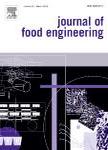版权所有:内蒙古大学图书馆 技术提供:维普资讯• 智图
内蒙古自治区呼和浩特市赛罕区大学西街235号 邮编: 010021

作者机构:Shenzhen Univ Coll Chem & Environm Engn Dept Food Sci & Engn Shenzhen 518060 Peoples R China Shenzhen Univ Shenzhen Univ Med Sch Sch Biomed Engn Shenzhen 518060 Peoples R China Guangdong Prov Key Lab Math & Neural Dynam Syst Dongguan 523000 Peoples R China Marshall Lab Biomed Engn Shenzhen 518060 Peoples R China
出 版 物:《JOURNAL OF FOOD ENGINEERING》 (食品工程杂志)
年 卷 期:2024年第383卷
核心收录:
学科分类:0832[工学-食品科学与工程(可授工学、农学学位)] 0817[工学-化学工程与技术] 08[工学]
基 金:Natural Science Foundation of Guangdong [2022A1515011520] National Natural Science Foundation of China Guangdong Basic and Applied Basic Research Foundation [2023A1515011481] Stable Support Project of Shenzhen Shenzhen Excellent Scientific and Technological Innovation Talents Training Project [RCBS20210609103155057] Interdisciplinary Innovation Research Team for Key Technologies of Traditional Chinese Medicine Emerging Biological Materials and Intelligent Equipment Development [GZKJ2303]
主 题:Milled rice quality Computer vision algorithms Broken kernels Chalky grains Logistic regression Iterative threshold segmentation
摘 要:The milled rice industry faces challenges in effectively detecting and sorting broken kernels and chalky grains. This paper presents a computer vision approach to detect and characterize broken kernels and chalky grains in three milled rice varieties (HM105, WYD4, and JH6). Broken kernel sorting was validated against an ISO-derived recognition method, while the identification of chalky grains was validated using a DSC to assess thermal behavior. The logistic regression showed a strong discriminatory ability in identifying broken kernels. Unlike the ISO method, logistic regression achieved high sorting accuracy for HM105, WYD4, and JH6. The iterative threshold segmentation algorithm also accurately segmented chalky regions in milled rice grains. Regression analysis revealed a significant positive correlation (R2 = 0.94) between the chalky region area and Delta H values. Therefore, this study introduces a robust and rapid methodology for quantitatively detecting milled rice, with the potential for automation and intelligentization in rice-based food processes.